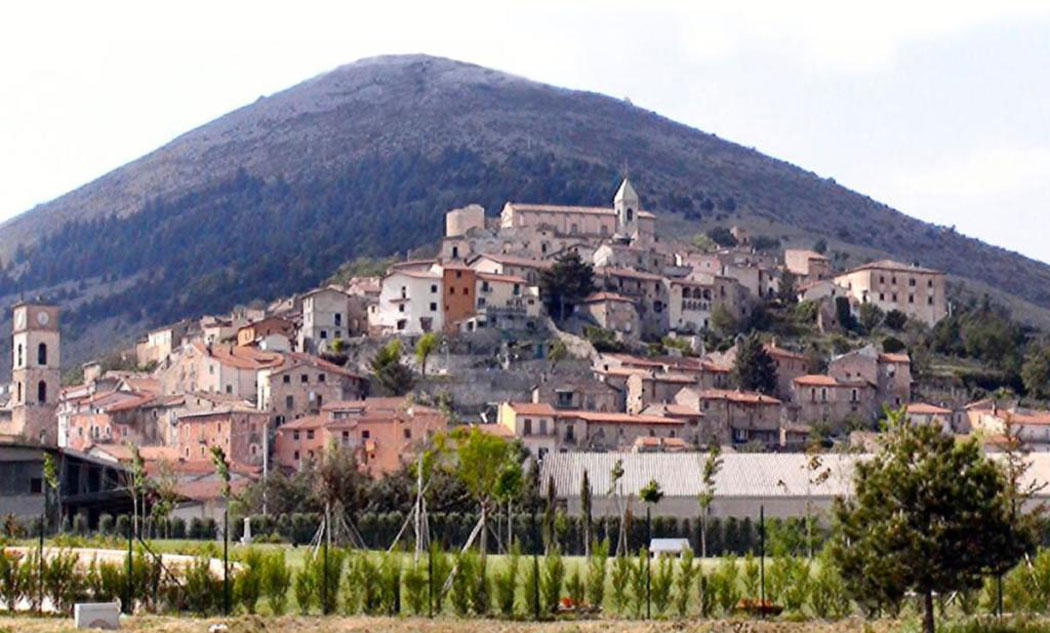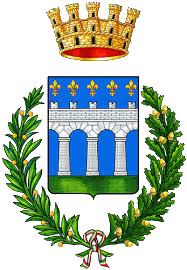

Scurcola Marsicana is a beautiful Abruzzese village in the Marsica area located on a hill at the foot of Monte San Nicola. From its peak the Campi Palentini command the view of where the battle of Tagliacozzo was fought, which saw the end of the Swabians in Italy.
The word Scurcola has the meaning of 'sentinel' and indicates a place that was guarding a wider territory. In fact, several roads started from here and, in addition to the Via Valeria that connected with Rome, they went to the Adriatic, Campania and Rieti.
The area was inhabited since prehistoric times and traces of a village have been found on the heights of Monte San Nicola. This was the area disputed between the Equi and the Marsi before the arrival of Rome, who built the colony of Alba Fucens by allocating part of the land to veterans.
The Marsi destroyed Alba Fucens before being finally conquered in 294 BC.
The Romans built villas in the flat parts of their large farms that included housing units, which were then abandoned when the barbarians arrived when people took refuge in fortresses built on high ground.
The whole territory was first ruled by the Byzantines of the Holy Roman Empire of the East and then by the Lombards who inserted the area into the Duchy of Spoleto.
In the meantime, the church had started building a series of Benedictine monasteries for the preservation of knowledge, including agriculture, and had divided the territory into bishopric dioceses. Scurcola was part of the diocese of Avezzano.
With the arrival of Charlemagne, Marsica entered the Holy Roman Empire of the Franks who divided the territory into counties and entrusted the Marsi County to Berardo il Francioso, a captain of fortune who descended directly from Charlemagne.
The Berardi family ruled with some foresight and independence from the crown and in the 11th century Count Oderisio began the construction of a real castle.
In 1143, the counts of the Marsi joined the Norman government without battles and Scurcola Marsicana became part of the Kingdom of Sicily. The construction of the first castle and settlement was from the Norman period.
The arrival of the Swabians of Frederick II again changed the cards on the table and the Berards had a direct confrontation with the emperor to try to have greater independence.
At the end of 1100, the De Ponte family arrived from nearby Umbria and bought many parts of Scurcola and Tagliacozzo acquiring great importance among the barons. The De Ponte was responsible for the destruction of the previous castle and the construction of a new one.
But in 1268, Corradino di Svevia was defeated by Charles I of Anjou in the battle of Tagliacozzo and thus began the period of the Angevins of France who immediately moved the capital of the kingdom to Naples. Corradino di Svevia had arrived in Scurcola thanks to the Berardi who were loyal to him and this did not please the new rulers.
The Orsini (related to the De Ponte) then arrived with the Angevins but a part of the territory became a Monastic Fiefdom. In fact, Cistercian monks from France had also arrived in Scurcola and the great Abbey of Santa Maria della Vittoria was built, in memory of the battle of Tagliacozzo. The abbey was connected to a mother abbey in France and, although few ruins of this church remain today, the French monks had controlled a large part of the territory for many years.
The great earthquake of 1349 would once again change the course of history: the abbey was damaged while a new life for the castle began.
In the meantime the Orsini had expanded in Rome and their goal was to widen the boundaries of the Papal States and for this reason they consolidated their presence in Scurcola with the construction of a new imposing fortress.
Thus, in 1490 Gentile Virginio Orsini commissioned the architect Francesco Giorgio Martini expert of castles to build a new fortress as we know it today: imposing, elegant and majestic. A defensive role but also having a residential part.
A new earthquake in Irpinia in 1456 damaged some structures also in Scurcola but in the Renaissance, with the Colonna, wonderful churches were built which are still the heritage of Scurcola Marsicana.
The Orsini soon came into conflict with another powerful Roman family, that of the Colonna, and in the passage from the French to the Spanish of Aragon on the throne, the Colonna became the feudal lords of this territory and in 1504 they became Dukes of Tagliacozzo.
But the Spanish rulers imposed high taxes and impoverished Scurcola and the whole kingdom causing a great economic crisis. The plague of 1656 caused even more deaths and other earthquakes in the eighteenth century further aggravated the situation.
In 1734 the Bourbons arrived on the throne of Naples and there was an improvement in the general conditions until the arrival of Napoleon Bonaparte. In 1806 feudalism was abolished putting an end to the role of families and the castle of Scurcola started to decline.
With the return of the Bourbons to the throne of Naples, the situation improved but the Fucino lake became unmanageable and in 1845 Alessandro Torlonia provided for its drying up.
During the work, in 1861, the Bourbon kingdom was annexed to the new Kingdom of Italy after some gun fights in the nearby Tagliacozzo.
There followed a period of civil revolt, the phenomenon of banditry was born and many Abruzzesi left their land to go to seek fortune in America. One of the strongest bands was that of Mancini to which Luigi Ciavarella di Scurcola had also joined.
In 1915, the great earthquake of Marsica would once again bring about destruction on these lands and increase the amount of emigration.
At the end of the 90s, the castle was restored, which has now returned to its magnificence.







Follow us